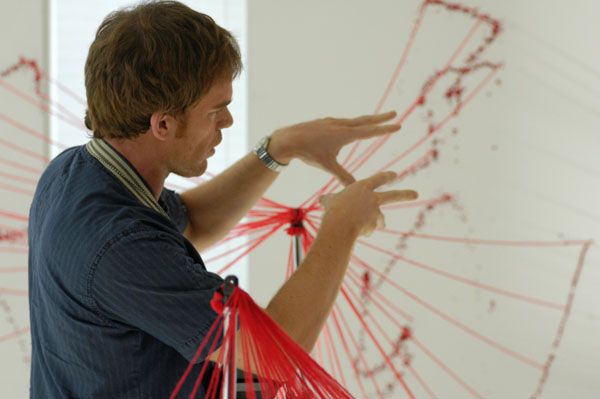The Real Law and Order
On Dec. 7, some of the nation’s top forensics experts participated in the 3rd annual NC State Forensic Science Symposium. The symposium, which draws law enforcement professionals from around the state, puts the latest industry research and news into the hands of crime-solvers.
Interesting highlights from the event include:
A keynote address by internationally renowned forensics consultant Paul Kish on Bloodstain Pattern Analysis: Fact or Fiction? Kish opened up by saying how much easier it would be to be a bloodstain expert if it were as simple as A amount of blood x B amount of force = C bloodstain pattern. He said that crime scenes have so many other variables one must take into consideration, and if you refuse to take them into account, your conclusions will be questioned at trial. And, for this Dexter watcher, it was sad to hear that those cool bloodstain string recreations aren’t used too often …common sense (for a bloodspatter expert, I suppose) often suffices. Kish’s key message – which he repeated often through examples – was that bloodstain analysis has a solid science foundation to it. However, when people try to extrapolate too much information from that science, they start leaning toward science fiction.

Also, in a panel discussion on the future of forensic science – which included Kish, along with a medical examiner, forensic entomologist and state prosecutor, among others – we heard how real the “CSI effect” is in the courtroom. Due to the popularity of crime shows like CSI and Law & Order, jurors have an unreal expectation of the types of evidence they want to see. One member of the panel joked that a defendant could practically confess to the crime, but today’s jurors are still going to want to see fingerprints on the gun and DNA in the crime scene. Unfortunately, that is complicating many cases that could be considered “open and shut.” It takes significant time and financial resources for state law enforcement officials to collect, process and test every piece of evidence at a crime scene. And during a time when many states are battling significant cutbacks due to the economy, it can cause major issues.
Another thing I never realized before the conference is that forensic science is a tool mainly used by the prosecution. It is very rare for the defense to enter forensic evidence, unless it is to combat something being presented by the prosecution. Since it is the prosecution’s job to present evidence (and the defense’s job to disprove that evidence), if forensic evidence is going to be presented in court, is it most likely going to be presented on behalf of the prosecution.
So there you go! Your dose of real-world crime solving for the day!
The symposium is one of several events put on by the North Carolina Program for Forensic Sciences – a joint-endeavor between NC State and the North Carolina Office of State Archaeology Research Center. Others include field training programs like “Discovery and Recovery: Death in Natural Environments” where law enforcement officials explore staged crime scenes to hone their skills in crime scene investigation.
- Categories:


